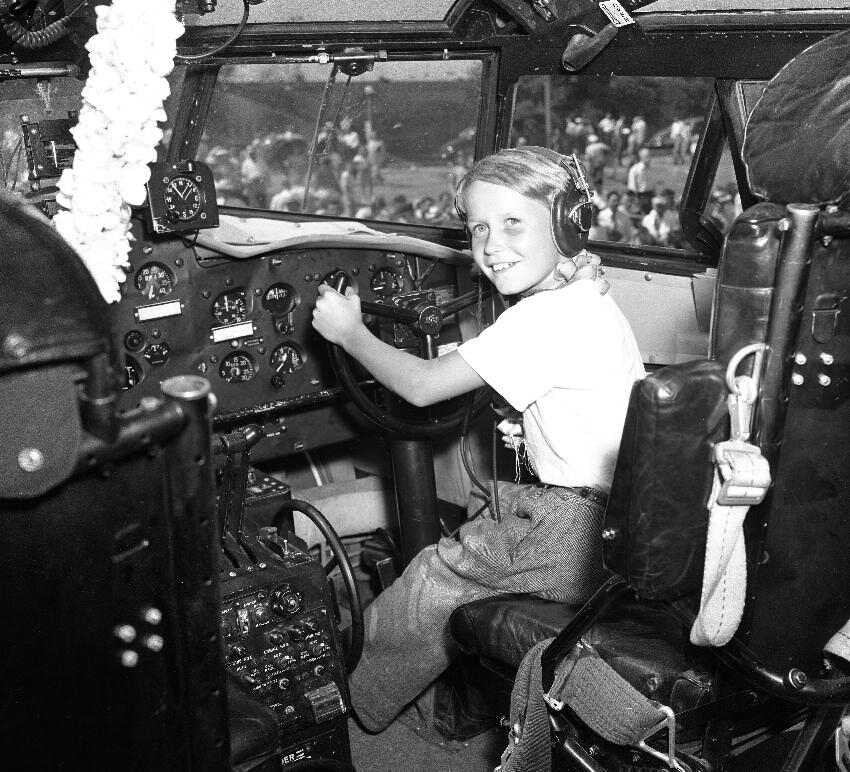
Cold War Military Trends: Financing the Military

Figure 1.--The Cold War was a 40-year struggle between the United States and the Soviet Union. While the military balance was central to the struggle, there was never a direct military engagement between the two countries. Financing the military was an important part of that struggle. The Communist Party approved the enormous appropriations in the Soviet Union without public input. The cost were enormous and most of America's European allies who benefitted most from America's huhe commitment, did not make comparable cotributions. The United States needed public support to approve the needed appropriations in Congress. Thus each service conducted a range of public relations activities to show off their hardwearat air shows and other public events. Here 12-year old Mickey MacShanenis is at the controls of the flying boat "Caroline Mars" after its first landing at Burnham Park Lagoon in Chicago on August 29, 1948. "Caroline Mar," one of eight U.S. Navy flying boats. The United States Navy contracted it as a long range patrol ocean patrol flying boat which entered production as a long-range transport as the JRM.
|
|
The Cold War was a 40-year struggle between the United States and the Soviet Union. While the military balance was central to the struggle, there was never a direct military engagement between the two countries. Financing the military was an important part of that struggle. The costs were enormous. Vast sums were spent by both America and the Soviet Union. For much of the Cold war, the U.S. Defence Department consumed a major part of the Federal budget, even when not engaged in the Korean and Vietnam Wars. Researching and building modern weapons was enormously expensive. And most of America's European allies who benefitted most from America's huge commitment, did not make comparable cotributions. The Soviet Union also spent vast sums. Part of the expenses were recouped by advantageous trade deals from the Soviet Eastern European empire. The Communist Party approved the enormous appropriations in the Soviet Union without public input. The costs were enormous and most of America's European allies who benefitted most from America's huge commitment, did not make comparable cotributions. The United States needed public support to approve the needed appropriations in Congress. Two factors worked against the Soviet Union. First the American capuitalist economy was both larger and more efficent. And financing the vast Soviet military put an enormous strain on the inefficent Soviet socialist command economy. Second, the Sovietv culture of secrecy and fear of conspiracy prevented the scientific work on the military and space from breing used by industry for consumer goods. The opposdite approach occurred in the United States. Whole new industries emerged from Cold War and space research which helped grow the American economy. The comouter industry and the ihnternet was the most prominant new industry. And of course the expahding economy only increased America's ability to finance the military. Thus while the Soviet expendicures on the military played a major in the colapse of the Soviet Union, American military expeditures contributed to building the modern American economy.
HBC

Navigate the Boys' Historical Clothing Web Site:
[Return to Main Cold War military page]
[Return to Main Cold War page]
[Introduction]
[Activities]
[Biographies]
[Chronology]
[Clothing styles]
[Countries]
[Bibliographies]
[Contributions]
[FAQs]
[Glossaries]
[Images]
[Links]
[Registration]
[Tools]
[Boys' Clothing Home]
Created: 5:12 AM 2/18/2008
Last updated: 10:14 PM 6/17/2010



